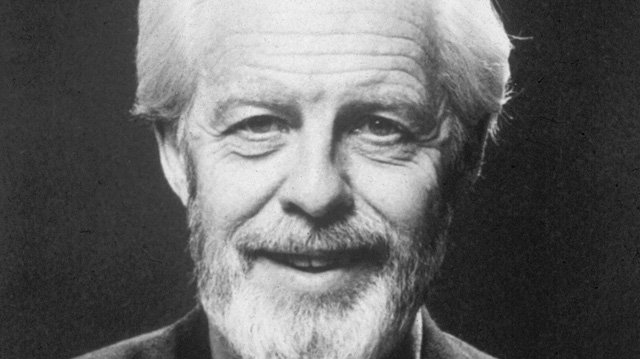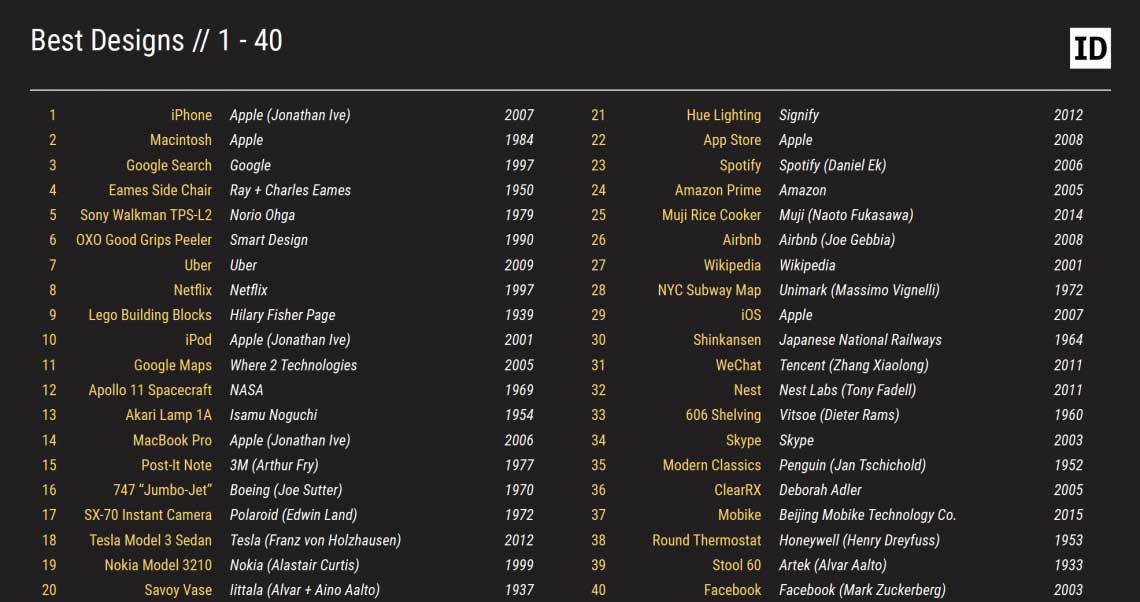One Hundred Years of Jay Doblin
By Andrew Connor
December 10, 2020

In 1987, two years before he passed away, Jay Doblin (December 10, 1920–May 11, 1989) penned the essay “A Short, Grandiose Theory of Design.” In Doblin’s eyes, the world was becoming increasingly complex, requiring more comprehensive design methods that would go beyond simply having design experience and applying intuition.
Doblin saw the writing on the wall long before “A Short, Grandiose Theory of Design.” He became ID’s director in 1955 having established himself as an accomplished industrial, product, and graphic designer. Previously he was chief designer at Raymond Loewy Associates and a partner at Lippincott & Marguiles.
He was a forward-thinking design theorist and educator.
“One of the things he nailed for ID as dean was what it meant to have a profession,” says Larry Keeley, an ID adjunct professor and co-founder former colleague of Doblin, Inc., (now part of Deloitte). “He knew a great profession always has three things: history looking backwards, criticism and deep analysis of its strengths and weaknesses now, and theory looking forward. That was just so profound and so different from everybody who teaches design, even to this day.”
As director, Doblin upheld the experimental ethos established by the school’s founder, László Moholy-Nagy, while instilling the curriculum with an emphasis on design theory and practice. Together, Moholy and Doblin established ID as one of the world’s foremost design schools.
“Jay stressed that it’s not the artifact, it’s the process,” says Tomoko Ichikawa, ID clinical professor and a former student of Doblin. “It’s about how you break things down to understand something and create something. For me, who came [to ID] with a blank slate, that was really comforting and reassuring and it gave me confidence. Jay taught me it wasn’t about the end product.”
Doblin was also insistent on bringing the design field into the realm of social sciences. He had begun a camaraderie with world-renowned psychologist Mihaly Csikszentmihalyi, then head of the University of Chicago’s psychology department, aiding Doblin’s vision for a more robust, research-driven practice.
“What Jay wanted was for the field of design to have a body of research, but to do that, designers need to be educated differently. He understood that anthropologists and social scientists were very good at studying human beings,” says John Pipino, a consultant at Doblin Inc. “Jay began to invite Csikszentmihalyi to lead one of his classes every semester, and Csikszentmihalyi began to invite Jay to lead one of his classes down at the University of Chicago. This went on for a couple of years, long enough that they began to recognize there was a real connection.”
Doblin was director at ID for 15 years and a faculty member beyond that time. All the while, he was a practicing designer and consultant. In 1959 Doblin advised Japan’s Ministry of International Trade and Industry on the creation of design policy that led to the development of export laws. Later he co-founded Unimark International, which became the world’s largest design firm of that era with offices in seven countries. There, he helped develop a comprehensive corporate identity program for JCPenney, which won an Industrial Designers Society of America Special Award for the Advancement of Design.
In 1981 Doblin founded his own consultancy with Keeley. Pipino joined shortly thereafter as one of its earliest employees. Now known as Doblin Inc, a unit of Deloitte, LLP, it’s considered the world’s first strategic design firm, and it allowed Doblin and his associates to apply his theories and methods of design to solve complex business problems for clients such as General Electric, the American Hospital Association, Borg-Warner, and Xerox, the last of which was a launching pad for the firm.
“Xerox came to Doblin specifically saying they were scared about the prospect of a paperless office and other digital futures they felt they weren’t ready for,” says Keeley. “They specifically said they wanted Jay, that he was the guy they needed to help them see the future differently. They wanted to know what they were missing when thinking about the future and how they could direct and manage their own Palo Alto research center.”
Ultimately, Doblin’s contributions to design went well beyond the products he designed, the clients he served, and the courses he taught. Through all these efforts, Doblin successfully skewed the design field further toward his vision as one with a deep well of theory and research that can be applied to solve complex problems.
“While most design programs were teaching design as an applied art done by individuals,” says Whitney, now professor in residence at the Harvard T.H. Chan School of Public Health. “Jay understood how design created broader value. This led to his creating frameworks and methods that connected design to business, engineering, and the social sciences. He made design less exotic and more powerful.”
ID will celebrate Doblin’s centenary on his 100th birthday, December 10, 2020, with Chicagoland: A Laboratory for 20th Century Design Innovation and with soon-to-be announced programming in 2021.


